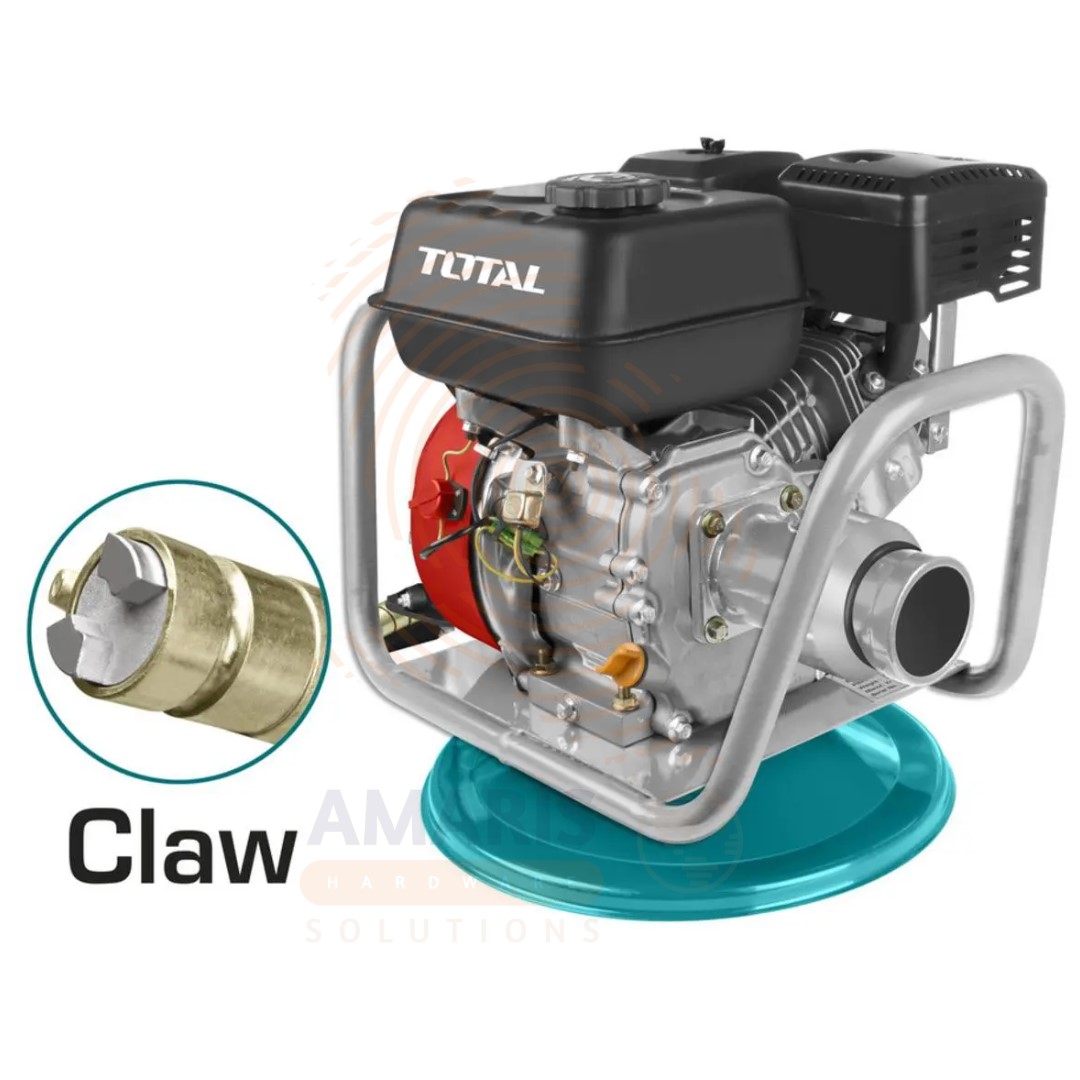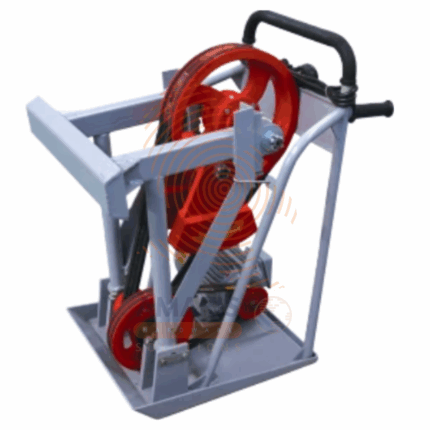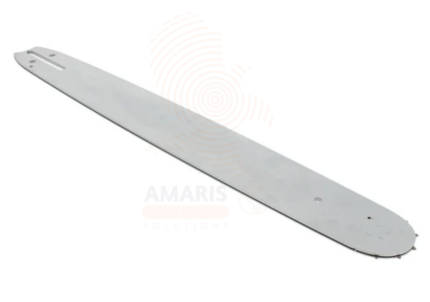Gasoline Concrete Vibrator
WhatsApp Order
A gasoline concrete vibrator is a construction tool powered by a gasoline engine and designed for consolidating and compacting freshly poured concrete. It typically consists of a vibrating head or poker attached to a flexible shaft, which is connected to the engine. The vibrator is inserted into the wet concrete to eliminate air bubbles, improve the overall strength and density of the concrete, and ensure a smooth and uniform finish. The gasoline engine provides the necessary power for the vibration, making the tool versatile and suitable for use in locations where electric power may not be readily available.
Description
Table of Contents
ToggleGasoline Concrete Vibrator
Uses
-
Concrete Compaction: The primary purpose of a gasoline concrete vibrator is to compact freshly poured concrete. It helps eliminate air voids and ensures the concrete settles uniformly, improving its strength and durability.
-
Foundation Work: Gasoline concrete vibrators are commonly used in the construction of foundations for buildings, bridges, and other structures. Proper compaction is crucial to the stability and load-bearing capacity of the foundation.
-
Slab and Floor Construction: When pouring concrete slabs or floors, a concrete vibrator helps in achieving a smooth surface and prevents the formation of air pockets or voids. This results in a more even and aesthetically pleasing finish.
-
Column and Beam Construction: For the construction of vertical elements such as columns and beams, using a concrete vibrator ensures proper consolidation of the concrete mix, enhancing the structural integrity of these components.
-
Road and Pavement Construction: Gasoline concrete vibrators are employed in the construction of roads, highways, and pavements to compact the concrete mix and ensure a durable and even surface.
-
Retaining Walls: Construction of retaining walls requires proper compaction of the concrete to prevent settling and ensure stability. Gasoline concrete vibrators are used for this purpose to achieve a strong and resilient retaining wall.
-
Tunnel and Underground Construction: In projects involving tunnels or underground structures, a concrete vibrator is utilized to consolidate the concrete mix and enhance its strength, crucial for the integrity of the underground construction.
-
Repair and Restoration Work: When repairing or restoring existing concrete structures, a concrete vibrator can be used to consolidate the new concrete mix with the old, ensuring a seamless and robust connection.
-
Precast Concrete Production: In precast concrete manufacturing, where concrete elements are cast off-site and then transported to the construction site, concrete vibrators are used to eliminate air bubbles and ensure uniformity in the precast elements.
-
Waterproofing Applications: Proper compaction of concrete is essential for waterproofing applications. Gasoline concrete vibrators aid in achieving a dense and watertight concrete structure, reducing the risk of water penetration.
SAFETY HANDLING PRECAUTIONS
Safety Precautions
-
Read the User Manual: Always read and understand the user manual provided by the manufacturer before operating the gasoline concrete vibrator. Familiarize yourself with the tool's specifications, recommended usage, and safety guidelines.
-
Personal Protective Equipment (PPE):
-
Wear appropriate personal protective equipment, including safety glasses or goggles, hearing protection, gloves, and steel-toed boots.
-
Consider wearing a dust mask or respiratory protection, especially if there is a risk of exposure to concrete dust.
-
-
Inspect the Equipment:
-
Before each use, inspect the gasoline concrete vibrator for any damage, loose parts, or signs of wear. Do not operate the tool if it is damaged or malfunctioning.
-
Ensure that all fasteners, bolts, and connections are secure.
-
-
Fuel Handling:
-
Refuel the gasoline engine in a well-ventilated area, away from open flames or sparks.
-
Do not refuel the tool while it is running or still hot from operation.
-
Use an approved fuel container, and avoid spillage.
-
-
Operational Area:
-
Ensure the work area is well-lit and free of obstacles to prevent tripping hazards.
-
Keep bystanders and other workers at a safe distance from the operating concrete vibrator.
-
Clearly mark the area where the tool is in use, and establish a safety zone.
-
-
Stable Operating Position:
-
Operate the concrete vibrator from a stable and secure position to maintain control.
-
Avoid using the tool on unstable or uneven surfaces.
-
Use appropriate bracing or support when vibrating vertical forms or structures.
-
-
Proper Handling:
-
Hold the concrete vibrator firmly with both hands, maintaining a secure grip.
-
Do not touch the vibrating head directly, especially during operation.
-
Keep hands and clothing away from moving parts.
-
-
Switch Off Safely:
-
Turn off the gasoline engine before making any adjustments, changing attachments, or performing maintenance.
-
Allow the engine to cool before refueling or storing the tool.
-
-
Exhaust Fumes:
-
Operate the gasoline concrete vibrator in a well-ventilated area to minimize exposure to exhaust fumes.
-
Avoid prolonged exposure to exhaust gases, which can be harmful.
-
-
Training and Supervision:
-
Ensure that operators are properly trained in the safe use of gasoline concrete vibrators.
-
Supervise less experienced users until they demonstrate competence in operating the tool safely.
-
-
Emergency Preparedness:
-
Be familiar with the location and proper use of emergency equipment, such as fire extinguishers and first aid kits.
-
Know the emergency shutdown procedures for the concrete vibrator.
-
Related products
Cement and Paint Mixer
A cement and paint mixer is a mechanical device designed to efficiently and homogeneously blend cement or paint constituents to achieve a uniform and consistent mixture. Typically utilized in construction and painting applications, these mixers come in various designs, including portable or stationary models. They feature rotating blades, paddles, or agitators that facilitate the thorough mixing of dry or liquid materials, ensuring the creation of a well-mixed and homogeneous product suitable for construction or painting purposes.
Cement Blender
A cement blender is a mechanical device designed for the purpose of mixing and blending various components of cementitious materials, such as cement, sand, and water, to create a homogenous mixture. This blended mixture is commonly used in construction and building projects, particularly for applications like concrete production. The blender typically features a rotating drum or container that facilitates the thorough mixing of the ingredients, ensuring a consistent and uniform composition for the construction materials.
Circular Saw
A circular saw is a power tool equipped with a rotating circular blade, typically with teeth along its edge, designed for cutting various materials such as wood, plastic, metal, or masonry. It is commonly used in carpentry, construction, and other applications to make straight or beveled cuts with precision and efficiency. The circular saw is versatile and can be handheld or mounted on a table or other stationary surface, depending on the specific model and intended use.
Circular Saw Blade for Wood
A circular saw blade for wood is a cutting tool designed specifically for use with a circular saw. It typically consists of a flat, circular disc with sharp teeth along its outer edge. The blade is mounted onto the arbor of the circular saw, and as the saw operates, the blade spins rapidly to cut through wood materials. Circular saw blades for wood are specifically engineered to make efficient and clean cuts in wood, and they come in various sizes and tooth configurations to suit different cutting tasks and wood types. The teeth on the blade are strategically shaped and arranged to ensure smooth and precise cutting while minimizing splintering and tear-out on the wood surface.
Fast Charger
PRODUCT DESCRIPTION
A fast charger is a device designed to quickly recharge compatible batteries with a voltage rating of 20 volts. The "fast" designation implies that the charger is engineered to deliver a higher charging current, allowing for a more rapid replenishment of the battery's energy capacity compared to standard chargers. This type of charger is commonly used for power tools, electronic devices, or other equipment that operates on 20V batteries, providing users with a more efficient and time-saving charging solution.
Fibre Strengthened Resin Cutting Wheel
PRODUCT DESCRIPTION
A fiber-strengthened resin cutting wheel refers to a cutting tool designed for various machining applications, particularly in the context of metalworking or construction. This type of cutting wheel is composed of a resin matrix, which serves as a binding material, reinforced with fibers for added strength and durability. The fibers are typically made of materials such as fiberglass or other composite materials.
The combination of resin and fibers enhances the cutting wheel's structural integrity, making it more resistant to breakage and providing improved performance during cutting operations. The reinforced design allows the wheel to withstand higher levels of mechanical stress and heat generated during cutting processes. Fiber-strengthened resin cutting wheels are commonly used in applications like cutting metal, steel, or other hard materials, where precision and durability are crucial.
Forstner Bit Set
PRODUCT DESCRIPTION
A Forstner bit set typically refers to a collection of five Forstner drill bits designed for woodworking applications. Forstner bits are specialized cutting tools used to bore flat-bottomed holes with clean and precise edges in wood. The set usually includes five bits with varying diameters, allowing users to choose the appropriate size for different projects. These bits often feature a center point for accurate positioning, two sharp outer cutting edges, and a cylindrical shape. The set is versatile and suitable for tasks like drilling holes for dowels, creating pocket holes, or countersinking screws in woodworking projects.
Glass Drill Set Hexagonal Handle
PRODUCT DESCRIPTION
A glass drill set with hexagonal handles typically refers to a collection of five drill bits specifically designed for drilling holes in glass surfaces. The term "hexagonal handle" indicates that the shank of each drill bit has a hexagonal (six-sided) shape, which can provide a better grip and prevent slipping when used with a compatible drill. These drill bits are specifically crafted for working with glass materials, offering precision and minimizing the risk of cracking or damaging the glass during the drilling process. The set may include different-sized bits to accommodate various hole diameters.


 Acrylic Sealants
Acrylic Sealants Construction Adhesives
Construction Adhesives Double-Sided Tape
Double-Sided Tape Duct Tape
Duct Tape Electrical Tape
Electrical Tape Epoxy & Resins
Epoxy & Resins Masking Tape
Masking Tape
 Automotive Wrenches & Socket Sets
Automotive Wrenches & Socket Sets Battery Chargers & Jump Starters
Battery Chargers & Jump Starters Car Jacks & Stands
Car Jacks & Stands Car Wash & Detailing Products
Car Wash & Detailing Products Diagnostic Tools
Diagnostic Tools Tire Inflators
Tire Inflators Vehicle Lighting
Vehicle Lighting Oil & Lubricants
Oil & Lubricants
 Adhesives & Sealants
Adhesives & Sealants Bricks & Blocks
Bricks & Blocks Cement & Concrete
Cement & Concrete Drywall & Plaster
Drywall & Plaster Flooring (Tiles, Wood, Laminate)
Flooring (Tiles, Wood, Laminate) Lumber & Plywood
Lumber & Plywood Paints, Primers & Coatings
Paints, Primers & Coatings Insulation Materials
Insulation Materials Roofing Materials
Roofing Materials
 Circuit Breakers
Circuit Breakers Electrical Cables & Wires
Electrical Cables & Wires Switches & Sockets
Switches & Sockets Fuses & Relays
Fuses & Relays Connectors & Terminals
Connectors & Terminals Electrical Boxes & Panels
Electrical Boxes & Panels Conduit & Fittings
Conduit & Fittings Lighting Fixtures & Bulbs
Lighting Fixtures & Bulbs Extension Cords & Power Strips
Extension Cords & Power Strips
 Anchors
Anchors Bolts
Bolts Clips & Clamps
Clips & Clamps Screws
Screws Nuts
Nuts Washers
Washers Rivets
Rivets Nails
Nails Threaded Rods
Threaded Rods
 Hammers
Hammers Measuring Tools (Tapes, Levels, Calipers)
Measuring Tools (Tapes, Levels, Calipers) Screwdrivers
Screwdrivers Pliers & Cutters
Pliers & Cutters Saws & Blades
Saws & Blades Chisels & Punches
Chisels & Punches Allen Keys & Hex Keys
Allen Keys & Hex Keys Ratchets & Socket Sets
Ratchets & Socket Sets Wrenches & Spanners
Wrenches & Spanners
 Power Tool Accessories (Blades, Bits, Discs)
Power Tool Accessories (Blades, Bits, Discs) Rotary Tools
Rotary Tools Saws (Circular, Jigsaw, Reciprocating)
Saws (Circular, Jigsaw, Reciprocating) Drills & Drivers
Drills & Drivers Grinders & Sanders
Grinders & Sanders Heat Guns
Heat Guns Nail Guns
Nail Guns Impact Wrenches
Impact Wrenches Batteries & Chargers
Batteries & Chargers
 Pipes & Fittings (PVC, Copper, PEX)
Pipes & Fittings (PVC, Copper, PEX) Plumbing Tools
Plumbing Tools Pumps & Motors
Pumps & Motors Sealants & Adhesives for Plumbing
Sealants & Adhesives for Plumbing Valves & Taps
Valves & Taps Water Heaters
Water Heaters Drainage Systems
Drainage Systems Faucets & Fixtures
Faucets & Fixtures Hoses & Tubing
Hoses & Tubing
 Hinges & Latches
Hinges & Latches Hooks & Brackets
Hooks & Brackets Window Hardware
Window Hardware Chains & Cables
Chains & Cables Casters & Wheels
Casters & Wheels Shelving & Storage Systems
Shelving & Storage Systems Door Handles & Locks
Door Handles & Locks Drawer Slides & Cabinet Hardware
Drawer Slides & Cabinet Hardware
 Personal Protective Equipment (PPE)
Personal Protective Equipment (PPE) Respirators & Masks
Respirators & Masks Safety Glasses
Safety Glasses Safes
Safes Security Cameras
Security Cameras Gloves
Gloves Helmets
Helmets Ear Protection
Ear Protection Fire Safety Equipment
Fire Safety Equipment Locks & Padlocks
Locks & Padlocks Motion Sensors & Alarms
Motion Sensors & Alarms
 Garden Fencing
Garden Fencing Garden Furniture Hardware
Garden Furniture Hardware Lawn Mowers
Lawn Mowers Trimmers & Edgers
Trimmers & Edgers Shovels & Spades
Shovels & Spades Rakes & Hoes
Rakes & Hoes Pruning Shears & Loppers
Pruning Shears & Loppers Watering Systems (Hoses, Sprinklers, Nozzles)
Watering Systems (Hoses, Sprinklers, Nozzles)
 Interior Paints
Interior Paints Paint Brushes & Rollers
Paint Brushes & Rollers Paint Strippers & Thinners
Paint Strippers & Thinners Paint Trays & Accessories
Paint Trays & Accessories Exterior Paints
Exterior Paints Spray Paints
Spray Paints Primers & Undercoats
Primers & Undercoats Varnishes & Stains
Varnishes & Stains
 Gaskets & Seals
Gaskets & Seals Hydraulic Fittings
Hydraulic Fittings Industrial Fasteners
Industrial Fasteners Industrial Hoses
Industrial Hoses Lubricants & Greases
Lubricants & Greases Metal Sheets & Bars
Metal Sheets & Bars Bearings & Bushings
Bearings & Bushings Belts & Pulleys
Belts & Pulleys
 HVAC Filters
HVAC Filters Insulation for HVAC
Insulation for HVAC Air Conditioners
Air Conditioners Refrigerants
Refrigerants Ventilation Ducts & Fittings
Ventilation Ducts & Fittings Thermostats & Controllers
Thermostats & Controllers Fans & Blowers
Fans & Blowers
 Pegboards & Hooks
Pegboards & Hooks Shelving Units
Shelving Units Storage Bins & Containers
Storage Bins & Containers Toolboxes & Tool Chests
Toolboxes & Tool Chests Workbenches
Workbenches Drawer Organizers
Drawer Organizers Labeling Supplies
Labeling Supplies
 Welding Accessories (Clamps, Brushes)
Welding Accessories (Clamps, Brushes) Welding Electrodes & Rods
Welding Electrodes & Rods Welding Helmets & Gloves
Welding Helmets & Gloves Welding Machines
Welding Machines Soldering Irons & Stations
Soldering Irons & Stations Flux & Solder Wire
Flux & Solder Wire
 Generator Accessories
Generator Accessories Inverters
Inverters Portable Generators
Portable Generators Power Inverters
Power Inverters Transfer Switches
Transfer Switches Diesel & Gasoline Generators
Diesel & Gasoline Generators
 Transport Equipment: Carts, Dollies, and Hand Trucks
Transport Equipment: Carts, Dollies, and Hand Trucks Storage Solutions: Pallets, Racks, and Containers
Storage Solutions: Pallets, Racks, and Containers Lifting Equipment: Hoists, Cranes, and Jacks
Lifting Equipment: Hoists, Cranes, and Jacks Conveyors and Accessories: Belts and Rollers
Conveyors and Accessories: Belts and Rollers






